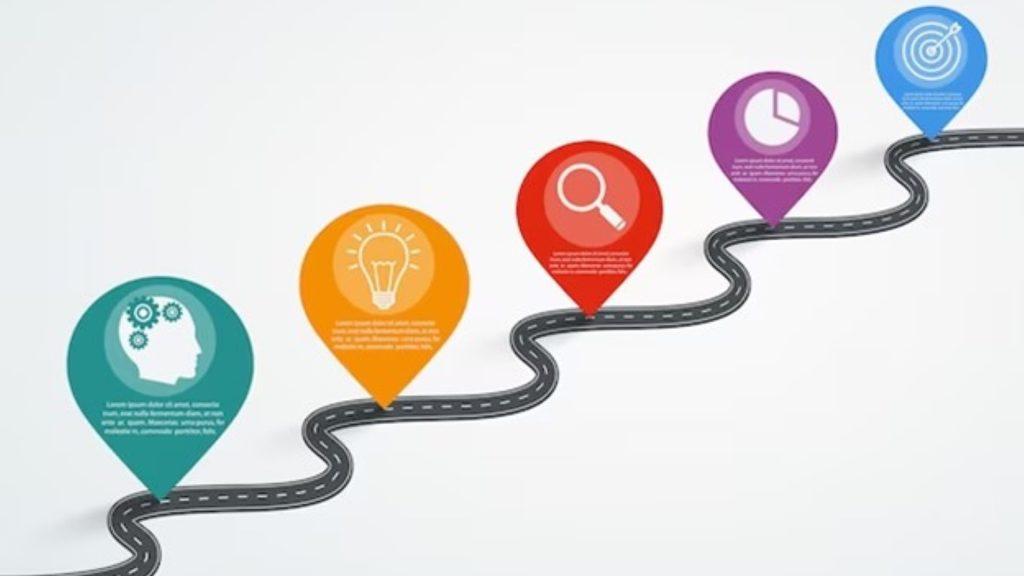
- April 15, 2024
- Laura Atwell
Create a Customer Journey Map: A Strategic Tool to Enhance Customer Experience
A customer journey map is like a roadmap that shows how customers travel through their experience with a company, product or service. It details all the steps and touchpoints, from the very first contact to the final interaction and beyond. Businesses create a customer journey map to understand their customers better and strategically use map touchpoints to make their customer experiences more enjoyable and to inform strategies to achieve their business goals.
But creating a customer journey map isn’t a solo gig. It’s a team effort that involves people from different parts of the company, like marketing, sales, customer support, product development, and more. Everyone brings their own insights and data to the table, which helps create a map that’s rich with perspectives and ideas. This collaboration ensures that the map is thorough and effective in making the customer experience exceptional.
Create a Customer Journey Map: Where to Start
Let’s talk about starting your journey map. When you create a customer journey map, you want to make sure it captures the customer experience during each stage of your customer lifecycle and gives you useful insights. Here are some key components to consider including:
- Stages: The journey should be divided into distinct stages that represent different phases of your customer’s interaction. Common stages include awareness, consideration, purchase, retention, and advocacy.
- Touchpoints: These are the points of interaction between the customer and the business across each stage of the journey. Touchpoints can be physical (e.g., store visit), digital (e.g., website visit), or communication-based (e.g., customer support call).
- Customer Actions: Actions or behaviors that the customer takes at each touchpoint or stage of the journey. This includes activities such as researching, browsing, purchasing, using the product/service, and providing feedback.
- Emotions and Expectations: Customer emotions and expectations are often included in the journey map to capture the customer’s feelings, perceptions, and satisfaction levels at different touchpoints.
- Opportunities and Pain Points: Identifying opportunities for improvement and areas of friction or dissatisfaction (pain points) along the customer journey. This helps businesses prioritize efforts to enhance the overall customer experience.
- Customer Persona: In some cases, a customer persona or user profile is included in the map to represent the target audience segment. This may include demographic information, preferences, goals, pain points, and motivations relevant to that specific customer journey.
- Channels and Devices: The channels and devices used by customers to interact with the business (e.g., website, mobile app, social media, in-store).
Marketing Tools to Leverage to Create a Customer Journey Map
A marketing automation solution equipped with a customer data platform (CDP) is like the captain of your team of marketing tools. It can integrate with CRM systems, email marketing tools, website analytics, and more. This super integration powers businesses and is a big help in shaping and handling your customer journey map. They come packed with features that make documenting and managing customer interactions at different points in the customer journey a breeze. Here are some of the areas marketing automation platforms with a CDP can help with:
Data Collection and Analysis: Data about customer interactions, behaviors, likes, dislikes, and feedback at various touchpoints can all be gathered through diverse marketing tools and integrated into one place. This data can then be organized and used to create a precise and detailed customer journey map.
Segmentation and Personas: Most automation tools allow for the segmentation of customers based on various criteria such as demographics, behavior, purchase history, and engagement levels. Develop detailed customer personas to understand different customer needs and journeys.
Personalization and Targeting: Marketing automation solutions facilitate lead nurturing by automating personalized email sequences, targeted campaigns, and follow-up messages based on customer actions and engagement. This helps guide leads through the sales funnel and keeps them engaged at each stage of their journey.
Multi-channel Campaigns: Businesses can orchestrate multi-channel campaigns with automation tools that span email, social media, SMS, website, and other digital channels. This ensures consistent messaging and experiences across touchpoints, contributing to a cohesive customer journey.
Content Creation and Delivery: Use content marketing tools that integrate with your automation solution to create and deliver relevant content at each stage of the customer journey. Develop content that addresses customer needs, educates, entertains, and guides them through the buying process.
Analytics and Reporting: Tracking customer interactions, campaign performance, conversion rates, and other metrics relevant to the customer journey are made easier with many automation tools. These insights help businesses evaluate the effectiveness of their strategies and make data-driven decisions to continually improve the customer journey.
Overall, marketing automation solutions empower businesses to define, manage, and optimize the customer journey map by leveraging data, personalization, automation, analytics, and cross-channel engagement capabilities. This leads to improved customer experiences, increased conversions, and long-term customer loyalty.
Where to Find Help
Beyond organizing a strong internal team to help define and build out your customer journey map, many free resources are available online for idea starters and free tools to build out your visuals. Check out templates found in Canva or Miro.
For more complex journey building, consider Customer Experience (CX) consultancy companies like Forrester, Gartner, and McKinsey or NextGen partner Couch & Associates. They each offer CX consulting services, workshops, and training programs focused on customer journey mapping.
It’s the perfect moment to dive into crafting or refreshing your customer journey map. Gain a competitive advantage, deliver exceptional customer experiences, and ultimately thrive in today’s competitive market by investing in customer journey mapping.